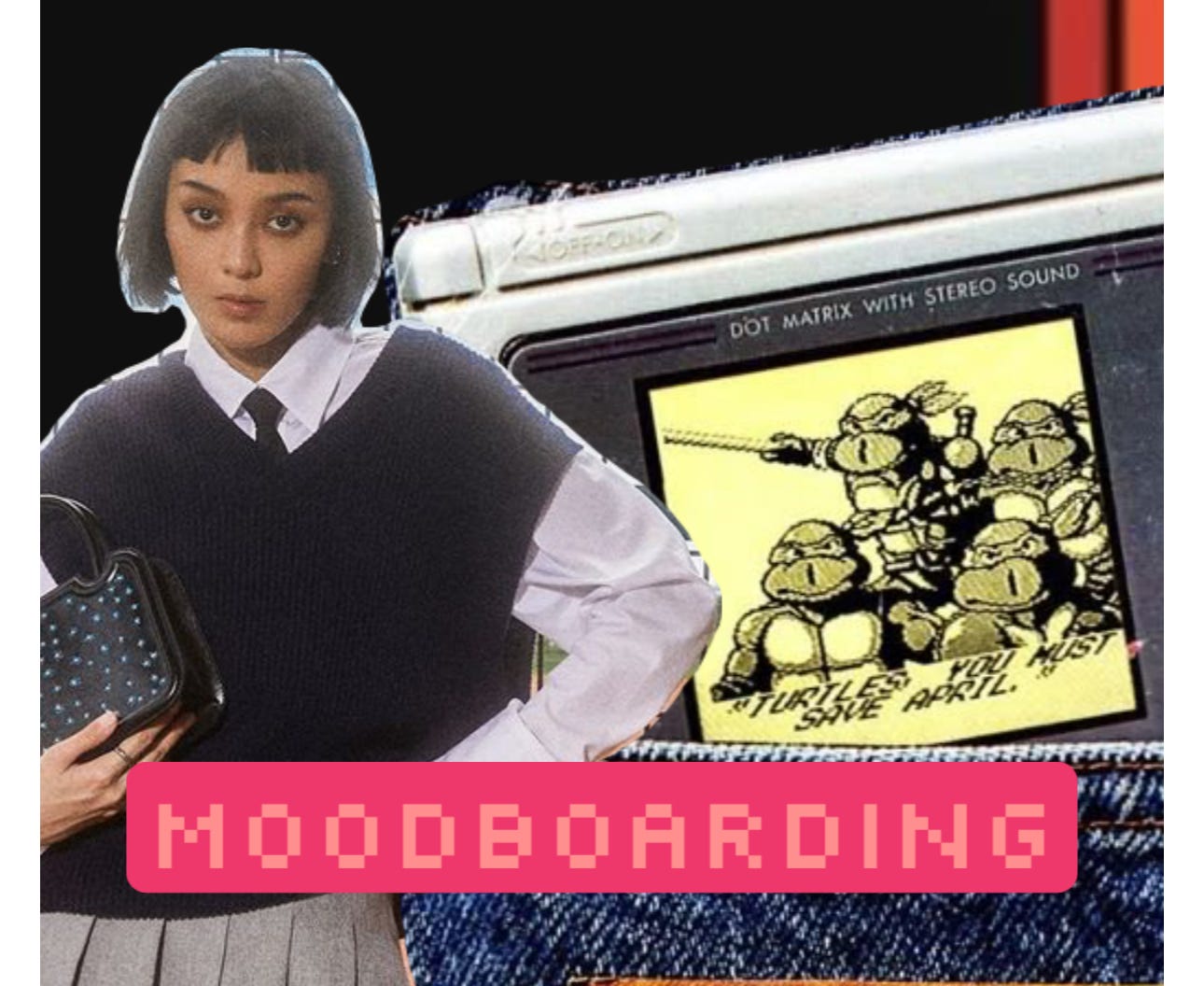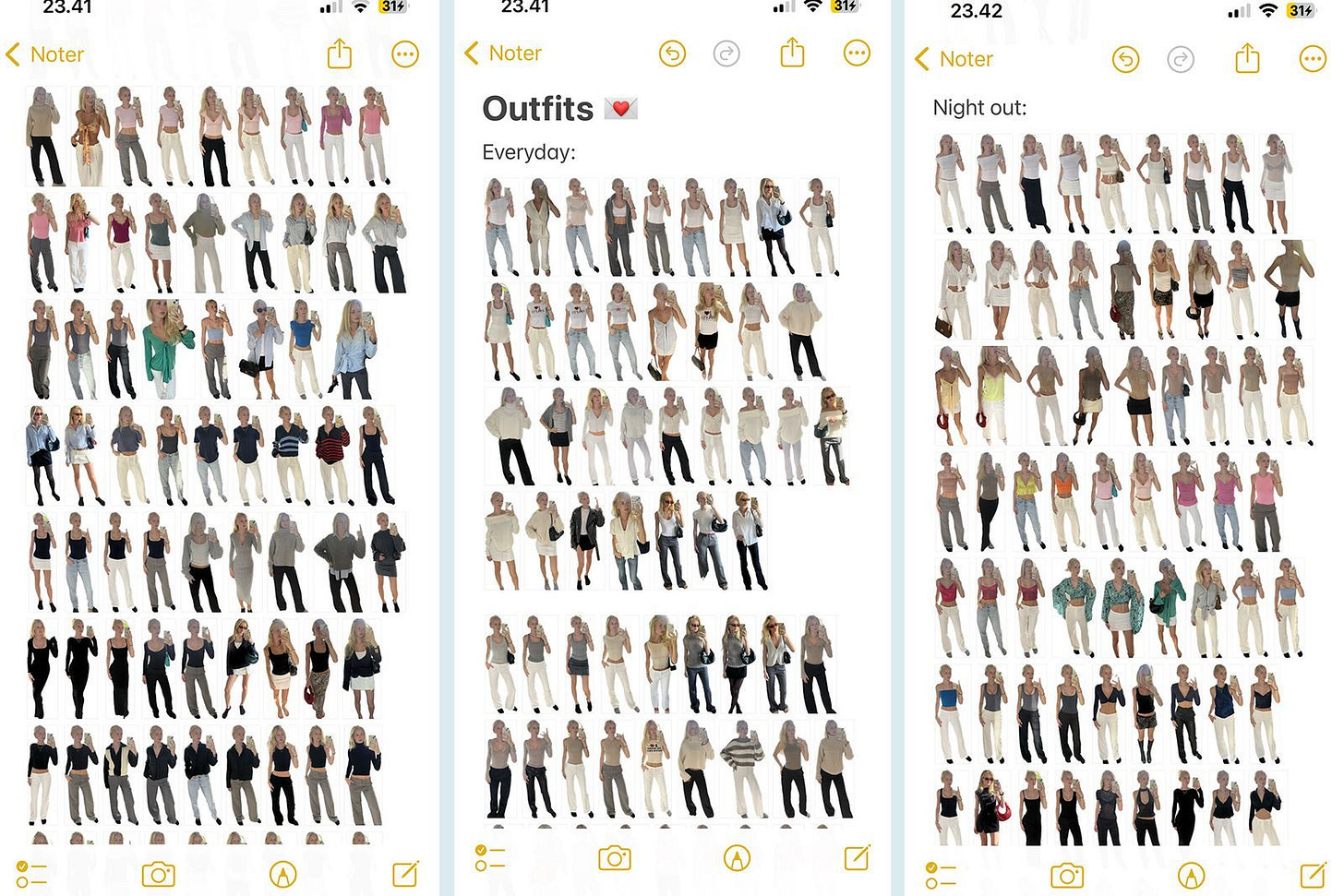The meaning of moodboarding
Moodboarding is exploding on social media. Both an intimate and performative practice, it reveals even more about our digital identities.
Tuesday Night on Earth. This week, we’re decoding an online activity that speaks volumes about our identities: moodboarding. I’ve launched our Substack Chat, feel free to join.
The way we express and shape ourselves online keeps evolving, becoming increasingly diverse and sophisticated. Some activities are explicit and public—posting content on Instagram or TikTok—while others are more subtle and implicit: saving an image, sharing a video via private message, collecting fragments of content… Yet, this fusion of visible and invisible activities not only shapes our experience of platforms but also redefines how we are perceived and categorized.
Based on our behaviors, we are algorithmically associated with other individuals, suggested in the same circles, and placed in digital landscapes that influence our visibility. In this ecosystem, one activity in particular has been skyrocketing: moodboarding. Following the rise of photo dumps, it is the latest trend in social media, blending curation, creation, and storytelling.
A practice driven by Pinterest and communities
Interest in moodboarding surged in the spring of 2022, according to Google, coinciding with the launch of Pinterest’s collage app, Shuffles. These features, now built into mobile applications by default, allow millions of users to create their own moods and visual universes with cutting, cropping, and collage tools—helping them “materialize their dreams”… and share them with others.
Moodboards are hardly a new practice. Traditionally used by stylists, art directors, and designers, they help define a vision, a tone, a territory. In the digital realm, the first digital collages can likely be traced back to the early PCs equipped with Microsoft Paint in 1985. The blend of lo-fi aesthetics and the intuitive pleasure of assembling visual references explains the enduring appeal of this approach.
In creative studios, moodboards still exist in the form of large boards covered in cut-out magazine images and archival materials, combining photocopies and sketches. Today, they coexist with Pinterest tabs left open all day, continuously enriched by creatives. Moodboarding is more than just an aesthetic exercise—it’s a strategic decision-making tool. It serves as a central reference to develop briefs for directors, photographers, and other creatives, guiding their visual treatments. In the fashion industry, a Gucci moodboard would never look like a Valentino one.
In the influencer sphere, entire teams use moodboards to craft public identities and sculpt cohesive digital personas.
For users, at a time when online communities expect a clear “vibe” from the accounts they follow—whether brands or creators—moodboarding is becoming a language of its own.
Moodboarding: A Refuge from Algorithmic Overload
One reason moodboarding is booming is the desire to reclaim control over the endless content streams on Instagram and TikTok. In response to oversaturation, the role of curator appears to be a sought-after stance. It’s no longer just about consuming but about organizing, editing, and making sense of things.
Capturing an image, gathering it alongside other personal references, composing an inspiration board—these simple gestures become a form of resistance against algorithmic suggestions. They allow users to reclaim a more intimate digital space, one that aligns more closely with their imagination. Moodboarding is akin to journaling: a moment of self-reflection that can later be shared with an audience. This act of active curation brings us back to a more intuitive exploration of the web, reviving a lost pleasure—the joy of discovery.
Beyond moodboarding, a broader trend is emerging: a pushback against algorithmic control. The quest to discover and explore freely, without being confined by platform feeds, is becoming a movement in itself. On Substack, dedicated moodboarding communities are thriving, proving that this practice is no longer just about collecting images—it is becoming a real instrument of influence. A quick search on Substack is enough to grasp its growing significance.
The Risk of Platform Co-Optation
On TikTok, countless “hacks” circulate to make the most of collage and moodboarding features, particularly in fashion. Amelia Keindl went viral after explaining how she uses the Notes app to always have her outfit moodboard at hand.
Of course, moodboarding also risks becoming a purely performative activity—a marker of social status, education, and taste. It feeds off inspiration found on social media, shaping its imagery, micro-trends, and representations.
As
powerfully states in Miscellanea:+ If we are the sum of our digital habits - bookmarking, sharing, and now, moodboarding - we are doomed for originality. - Marian Park
This punchline highlights a fundamental paradox: drawing inspiration from the digital world and turning it into a personal practice also fuels a collective dynamic where originality is constantly challenged.
So, is moodboarding an act of creative emancipation or just another loop of algorithmic reproduction? Maybe a bit of both.
The Stat of the week: 114 millions
On TikTok, there are nearly 114 millions videos featuring moodboards. Find yourself, or lose yourself.
Amazing links
Getty Images aesthetic (Size M)
Teens Are Forgoing a Classic Rite of Passage (The Atlantic)
AI fashion campaigns, innovation or mere imitation? (Briefed)
Have a great week! This newsletter is written with love, passion, and (French) coffee.
Feel free to share this newsletter, like, comment, or keep sending me emails: these notifications are a joy.
My book “Alive In Social Media” is available on Amazon.







Wow how did I not know about Shuffles lolz
Love the subject matter Laurent! Thought this was an excellent question presented,
"So, is moodboarding an act of creative emancipation or just another loop of algorithmic reproduction? Maybe a bit of both."
I also feel called out (and seen) by the line, :Today, they coexist with Pinterest tabs left open all day..."